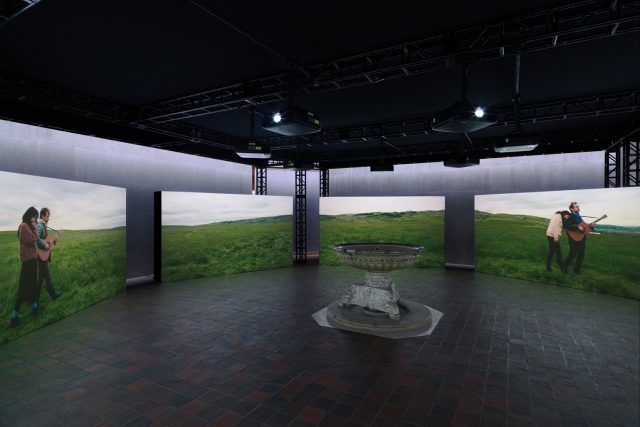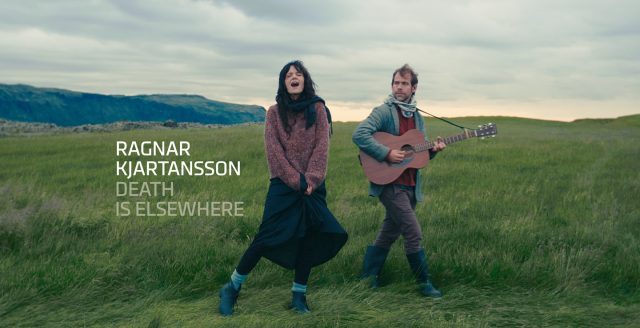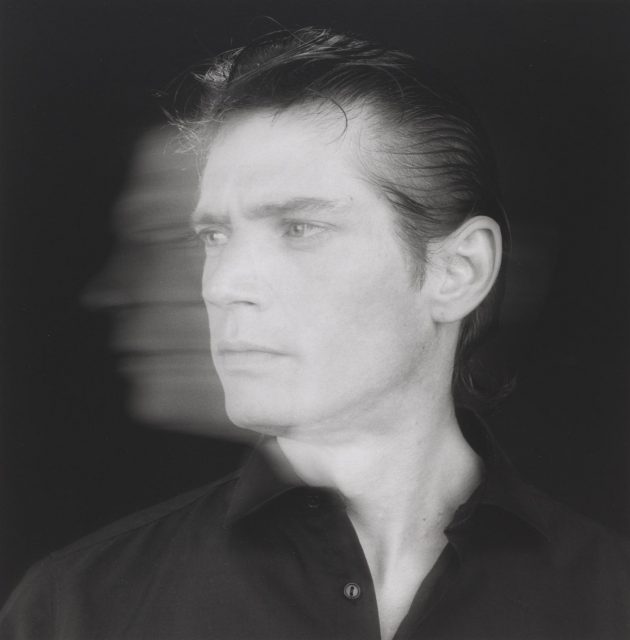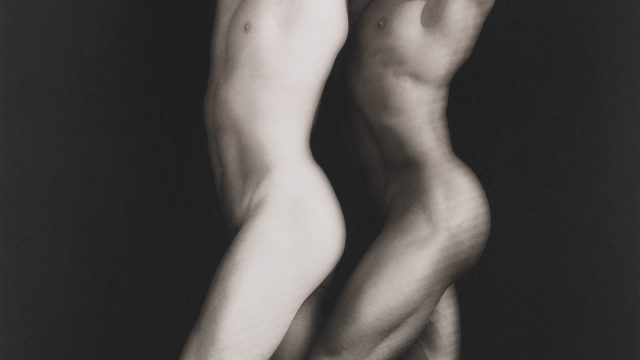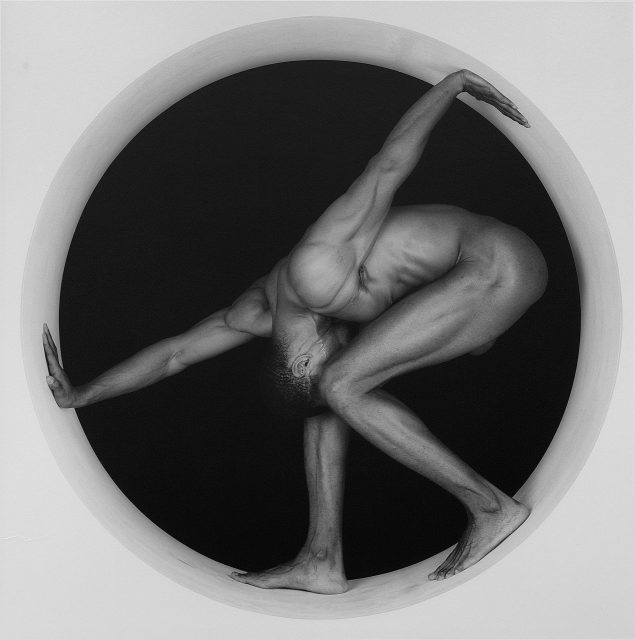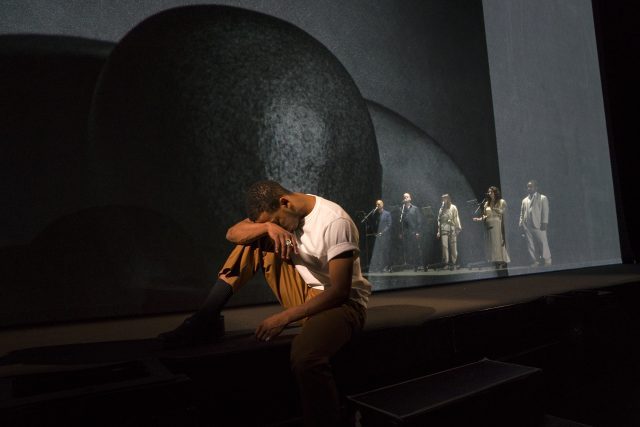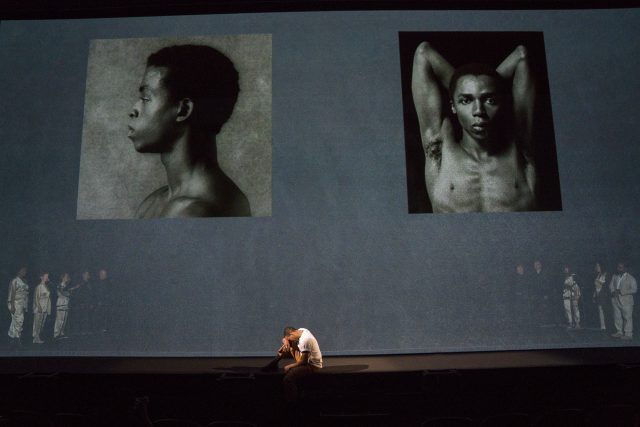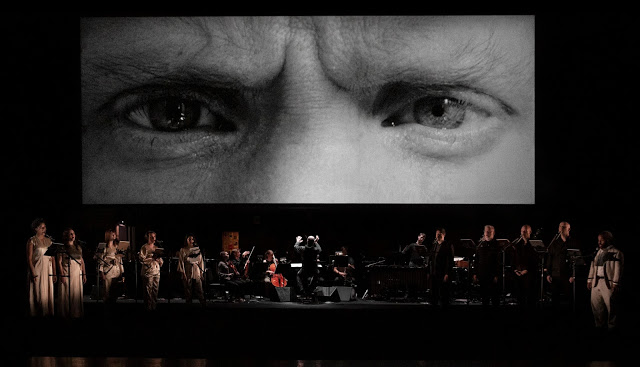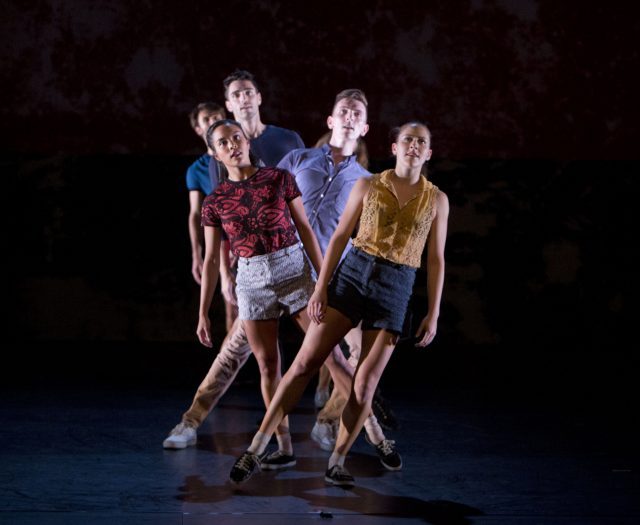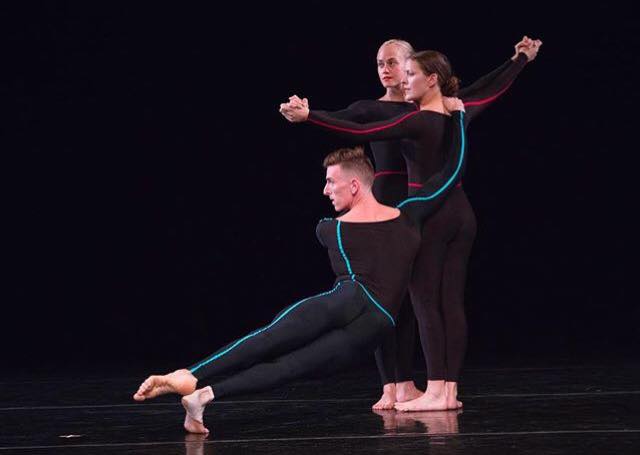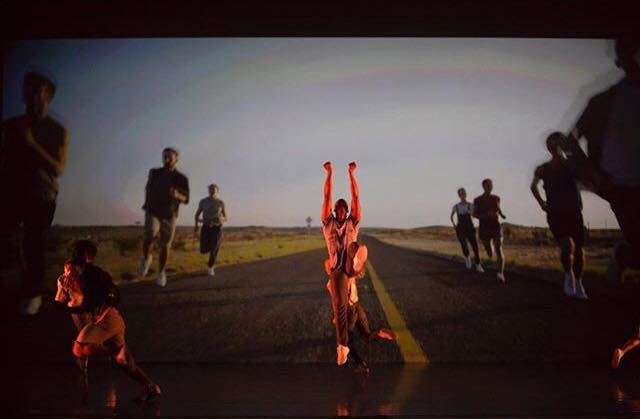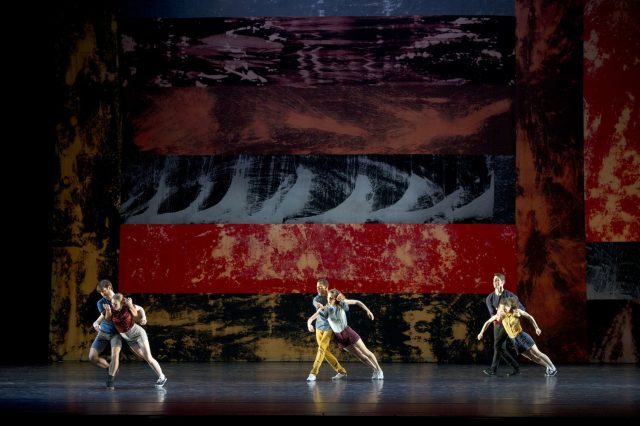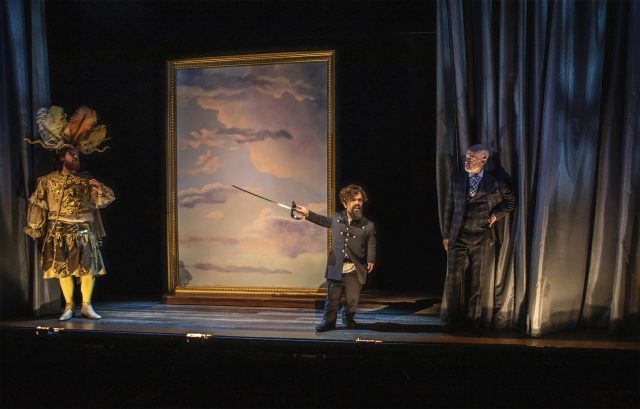
Peter Dinklage struts his stuff in wife’s musical adaptation of Cyrano story (photo by Monique Carboni)
The New Group at the Daryl Roth Theatre
103 East 15th St. between Irving Pl. & Park Ave.
Tuesday – Sunday through December 22, $107-$252
thenewgroup.org
You don’t need me to tell you that Peter Dinklage is an extraordinary actor. You can see for yourself in the New Group’s world premiere production of Cyrano, Erica Schmidt’s musical retelling of Edmond Rostand’s 1897 novel Cyrano de Bergerac, which opened last night at the Daryl Roth Theatre. Dinklage, who soared above his castmates in winning four Emmys as the wise, debauched Tyrion Lannister on Game of Thrones, commands the stage from the very start of the play; his eyes and body are so emotive, you cannot take your eyes off him. As opposed to many other stars who have portrayed Cyrano onstage and onscreen — Ralph Richardson, Derek Jacobi, Richard Chamberlain, Christopher Plummer, Gérard Depardieu, Steve Martin, and Kevin Kline among them — Dinklage does not wear a prosthetic nose; he is just himself, as he is. When Cyrano says early on, “I am living proof that God has a sick sense of humor,” it takes on additional meaning, given Dinklage’s achondroplasia. When he’s not onstage, you search for him, whether it’s when you hear his voice booming from the side of the audience or as he waits in the wings, watching the action in character, partially hidden by hanging ropes. Alas, if only the rest of the show were up to the same standards.
Cyrano is a brave, feared member of a company of guards; he is a man of both the pen and the sword, as expert with a blade as he is with a pencil. He is madly, desperately in love; the object of his affection is his childhood friend Roxanne (Hamilton’s Jasmine Cephas Jones), but the object of her affection is the novice guard Christian (Blake Jenner), a handsome man with not much upstairs. “I’m so stupid. It’s shameful,” he acknowledges. Roxanne is also desired by the wealthy and powerful Duke De Guiche (Ritchie Coster), who is charge of the company; he is determined to have Roxanne as his wife. Roxanne is love-starved as well: She sings, “I’d give anything for someone to say / That they can’t live without me and they’ll be there forever / I’d give anything for someone to say to me / That no matter how bad it gets they won’t turn away from me.” She falls for Christian at first sight, but he’s such a dull, dense beauty that he has no idea how to woo her, so Cyrano, who cannot bear to see Roxanne disappointed, starts ghostwriting love letters for Christian and feeding him romantic lines to say to her. It all comes to a head when Cyrano, Christian, and De Guiche are in a fierce battle on the front lines of the war.
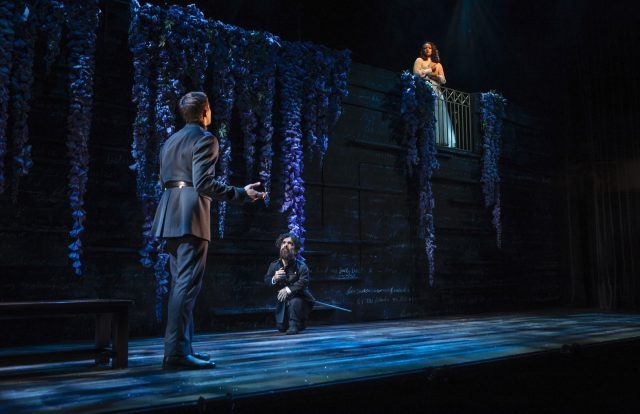
Christian (Blake Jenner) makes his case to Roxanne (Jasmine Cephas Jones) with Cyrano’s (Peter Dinklage) help in new musical (photo by Monique Carboni)
Adapted and directed by Schmidt (All the Fine Boys), who is married to Dinklage, Cyrano is all about the poetry and power of words. Cyrano lives to write letters. When his friend Ragueneau (Nehal Joshi), a pastry chef, is being threatened by one hundred men coming to kill him, Ragueneau explains it’s because of a political poem he wrote. When De Guiche is intrigued by Cyrano’s nose but can’t bring himself to be direct about it, Cyrano says, “You seem at a loss for words and, good sir, you are staring.” But Cyrano doesn’t believe his way with words or a sword (oddly, the two words are anagrams of each other) will capture his true love’s heart. Dinklage (The Station Agent, A Month in the Country) sings in his affecting, compelling low register, “Roxanne, what am I supposed to say? / Words are only glass on a string. / The more I arrange them and line up and change them / The more they mean the same thing.” When he makes the deal with Christian, he says, “I am a poet. My words are wasted now — they need to be — to be spoken aloud. I will make you eloquent and you, you will make me handsome.” The battle scene is particularly poetic, beautifully directed by Schmidt and choreographed by Jeff and Rick Kuperman, with snow falling down as the men and women soldiers say farewell to loved ones, perhaps for the last time.
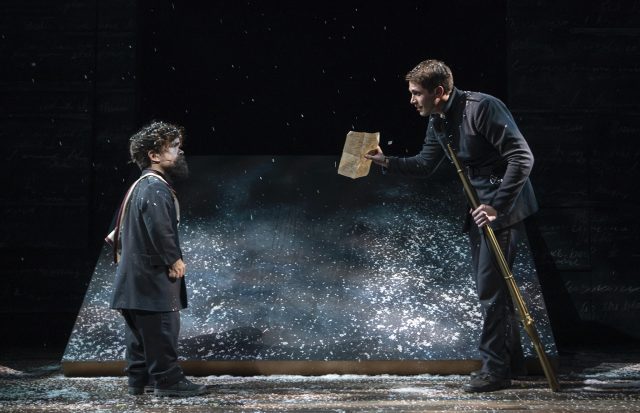
Christian (Blake Jenner) and Cyrano (Peter Dinklage) face off in New Group world premiere (photo by Monique Carboni)
The supporting cast is solid, led by Josh A. Dawson as Cyrano’s trusted right-hand man, Le Bret; Nehal Joshi as pastry chef and political poet Ragueneau; Grace McLean as Roxanne’s constant chaperone, Marie; Scott Stangland as the actor Montgomery and the cadet Carbon; Christopher Gurr as theater owner Jodelet and the priest; and Hillary Fisher as Orange Girl. Christine Jones and Amy Rubin’s narrow set features a long horizontal wall with sections that open up to reveal a room of chefs baking, a door, and a balcony where Roxanne calls out to Christian, who is coached by Cyrano in his replies. Words cover the wall like it’s a large blackboard; among the only legible phrases is the heartbreaking “And she loved me back,” which also pops up in one of the songs. The music, by twin brothers Bryce and Aaron Dessner of the National, and the lyrics, by the National lead singer Matt Berninger and his wife, Carin Besser (who cowrites lyrics for the band), are not as inventive as one might expect from a group with members who specialize in nontraditional melodies and experimentation, whether on an album, in an art installation, or even for an avant-garde opera.
For the show, which was workshopped in 2018 by Goodspeed Musicals in Connecticut, to really grab your heart and soul, the audience has to fall in love with Roxanne in order to understand why the Duke, Christian, and Cyrano do. But that never happens. As played by Cephas Jones, there’s nothing that sets Roxanne apart; she seems to be a nice young woman but not a heartthrob that makes men desire her on sight. And by the treacly ending, you’ll be wondering why the brilliant Cyrano ever wanted her in the first place. However, Dinklage’s gripping, poignant performance rises above everything else, making Cyrano well worth seeing despite its flaws.
